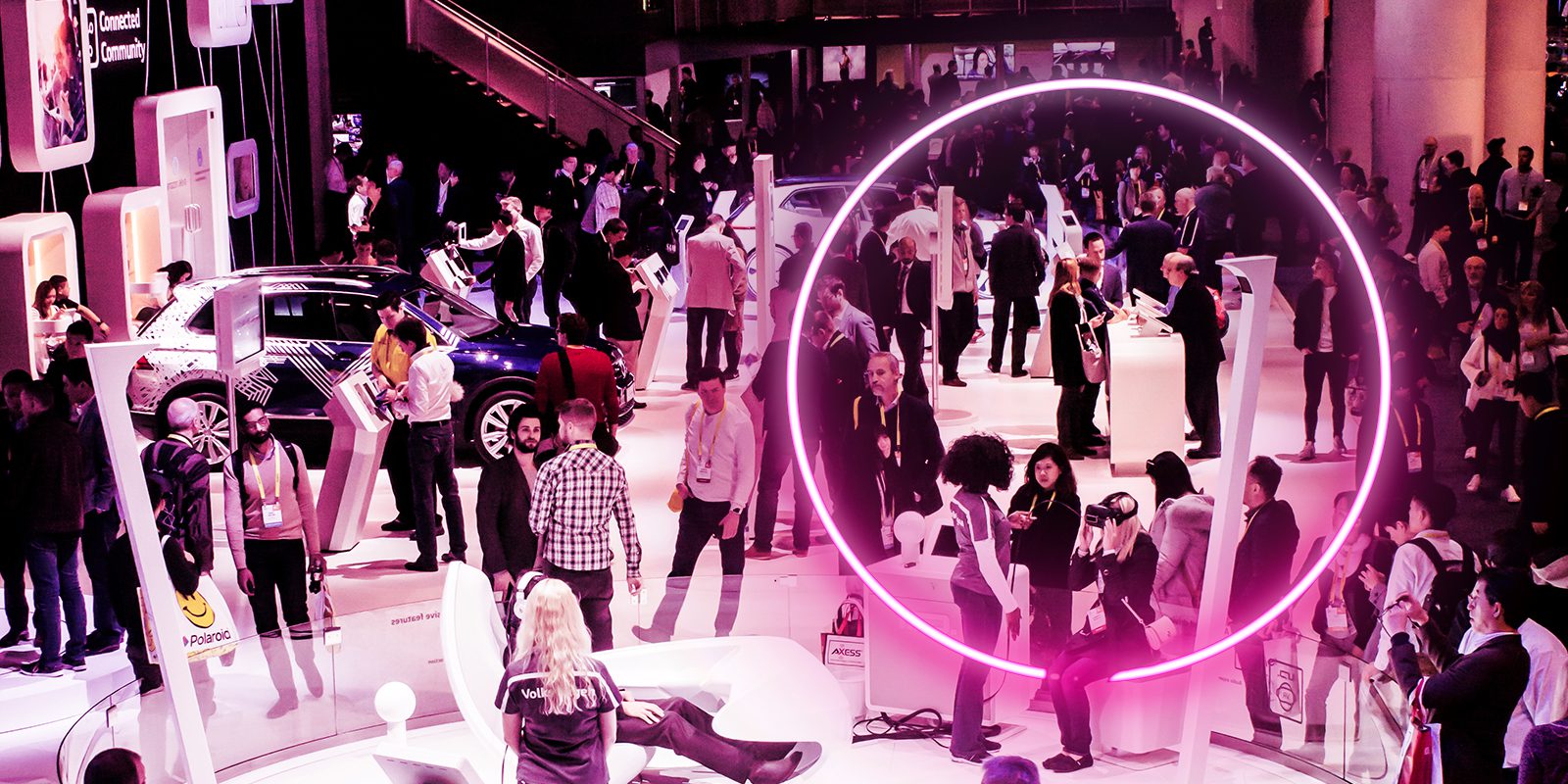With CES 2024 nearly here, editors at tech publications will be shaking off their Christmas zen and limbering up their headline-writing muscles for the annual peak of near-future reportage.
It’s a show with a predictable rhythm. We’ll see flagship product reveals: fancier headphones, faster, thinner laptops, and always, inevitably, bigger, thinner, brighter televisions. Consumer brands will show off category-making R&D projects: expect a least a few sci-fi car interiors to be on the exhibition floor, alongside plenty of demo devices in experimental form factors. And liveblogs will be littered with unusual, sometimes bizarre offerings: is anyone, for instance, still eagerly awaiting the neck-wearable smell dispenser announced at CES 2023?
Behind that pointy end of commercial offerings, however, CES also teaches us about the direction of the wider technology scene. As the place where many tech brands try to tap into consumer attitudes, it’s an opportunity to take the temperature of trends that will matter for deep tech vendors, systems integrators, datacentre operators, and every other stripe of B2B tech business just as much as the consumer brands that will dominate the headlines.
This year, we think a big underlying factor pushing and pulling at the discourse will be attempts to establish a refreshed position on sustainability, particularly as brands try to negotiate between the unstoppable force of AI pushing up energy demands and the immovable object of emissions targets which consumers – and governments – are increasingly vocal about.
Here, then, are our three picks for key themes that might rise or fall as priorities over four days of attention and analysis in Las Vegas.
Energy, efficiency, and electrification
It’s no surprise to see automakers at CES: the rise of EVs has also seen cars increasingly become ‘computers on wheels’. As EVs have become mainstream, however, so has awareness of the vast background complexity of transport electrification. Between questions about national grid capacity and balancing, raw material resourcing, and infrastructure transformation, they are becoming the clearest example of how changing energy at the point of use can mean changing all of those things in the value chain which consumers never directly interact with or (normally) think about.
For vehicles and other focus areas for consumer electrification, like heating and cooking, we’ll be looking out for how brands are speaking to this bigger picture. Influential audiences understand that there is more to effective electrification than putting batteries into products, and mature approaches will bring industrial partners – businesses like ABB that understand the infrastructural complexity at hand – into the picture alongside consumer electronics logos. Any growth in this direction should also be a signal that B2B tech brands more broadly need to invest in framing their energy strategy to end-users as well as customers.
Data demand and datacentres
It’s fair to view greater digital enablement as a boon for sustainability: digital platforms often displace physical processes, and something like videoconferencing produces fewer emissions than travelling to a meeting. That doesn’t eliminate the fact, however, that computation and networking constitute a major, and growing, share of our energy usage – a trend that most expect will be significantly accelerated by advanced AI adoption.
Anticipating further publicity around the energy demands, and subsequent environmental costs, of data usage, we’ll be looking out for brands taking more innovative, diverse approaches to delivering positive, sustainable change. Note, for example, the finding from NTT that 60% of business data goes unused and therefore produces unnecessary emissions: there are many routes towards sustainability left to be explored. If consumer brands at CES this year push the borders of sustainability communications, going beyond familiar lines about sourcing renewable energy and explaining how their products actually mitigate demand, that will signify an opportunity for B2B tech brands to make new avenues of emissions reduction possible for their customers.
Circular economy
Ultimately, the Consumer Electronics Show is always going to be, first and foremost, about consumers: it’s a stepping stone on the pathway from designers’ sketches to people’s homes. However much we digitalise, a big footprint to contend with in technology will still be embedded in physically producing goods, and it will be interesting to see how the presentation of that fact shifts if brands shine a brighter light on efficiency and data metrics. We’ve already seen this playing out in the regulatory context, with the EU’s Digital Product Passport proposal being the first attempt to legislate at scale around the impact of product lifecycles – but one which has been almost entirely overshadowed by other developments in tech industry oversight.
On the one hand, a shift in interest towards the platforms and infrastructure underpinning our devices may be a chance for B2B tech brands to nurture a stronger public reputation. On the other, consumer brands may choose to take on reusing, repairing, recycling, and reducing material usage as an area that they can fully own and drive forward. Either way, the level of focus that circularity gets at CES this year will have consequences right across technology and sustainability.

